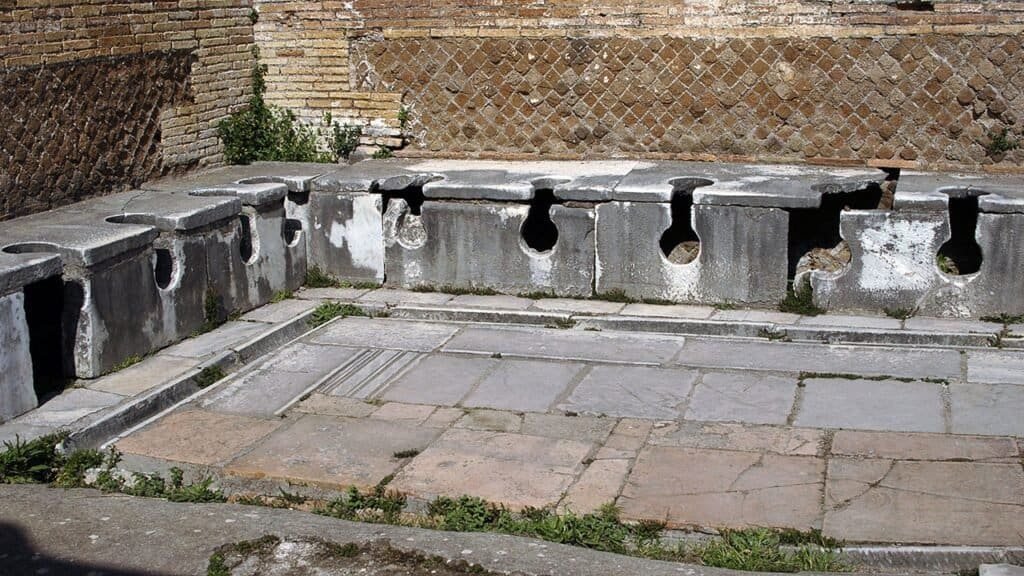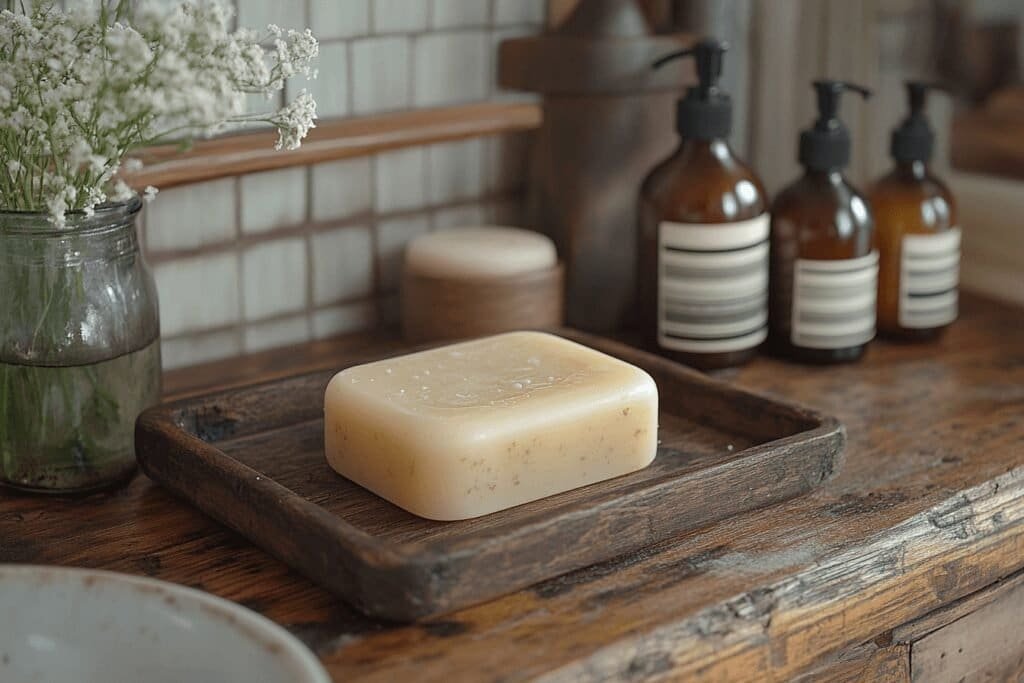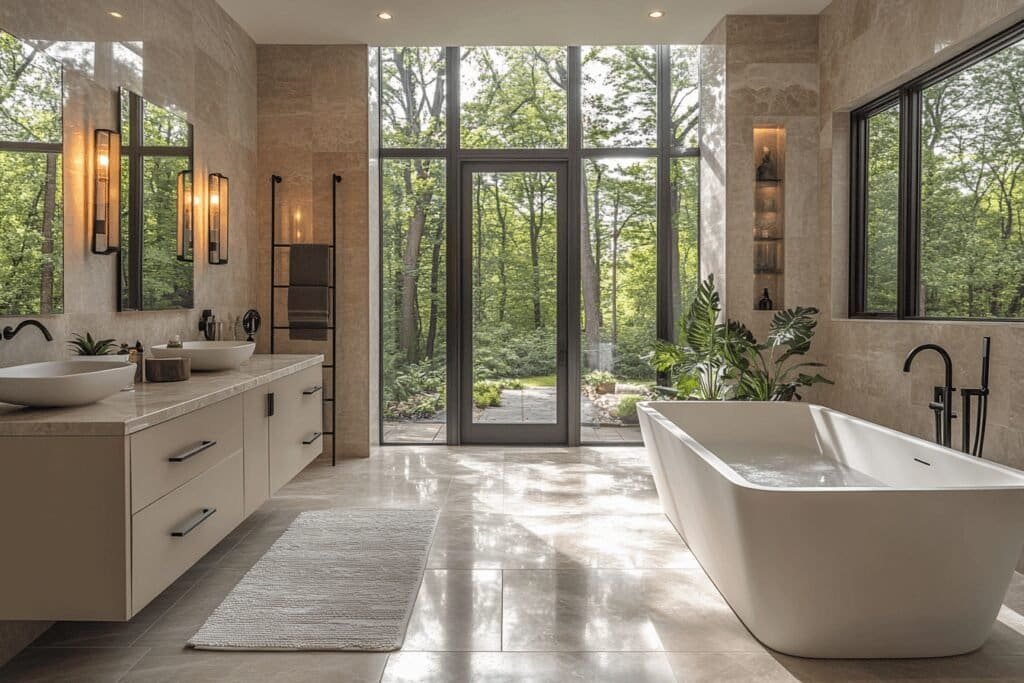The history of the bathroom shows how this essential space has evolved from a place of basic necessity into a sanctuary of comfort, privacy, and hygiene. Modern amenities like hot water, plumbing, flushing toilets, and bathroom ventilation, which we now take for granted, are the result of thousands of years of innovation.
Exploring the history of the bathroom gives us insight into how civilization has transformed this essential space into a blend of function, design, and luxury. Whether you’re planning a bathroom remodel or simply interested in history, understanding how the bathroom evolved helps us appreciate modern conveniences even more.
Ancient Civilizations and the Origins of the Bathroom
The history of bathrooms dates back to around 3000 B.C.. In ancient cultures, the bathroom wasn’t focused on hygiene, but rather on the spiritual significance of water, which was viewed as a purifying element for both the body and soul.
Indus Valley Civilization (circa 3000 B.C.)
The Indus Valley Civilization, located in modern-day Pakistan, is credited with having some of the first known bathhouses. These early “bathrooms” weren’t just for cleanliness but played a role in religious rituals. Communal baths were often built outside the main living areas, as people believed this kept evil spirits away from their homes. The Great Bath of Mohenjo-Daro, a large water tank, is one of the most famous examples of early bathroom infrastructure.
Ancient Egypt and Mesopotamia
In Egypt and Mesopotamia, wealthy citizens had access to private bathrooms, which were sometimes located near bedrooms or living areas. These baths were often used for ritual purification. Though these spaces weren’t quite what we think of as bathrooms today, they set the stage for future developments by associating cleanliness with health and status.
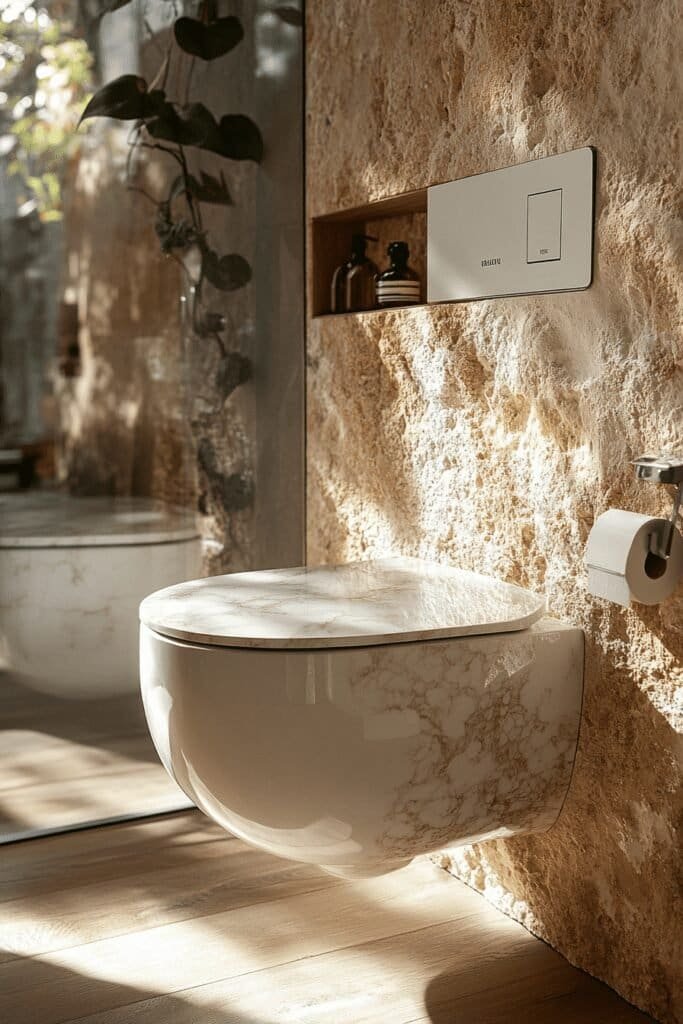

Roman and Greek Influence on Bathroom Culture
The Romans and Greeks were the first civilizations to make bathing a significant part of daily life. Public and private baths became central to social life, and early forms of plumbing were developed to support their growing need for hygiene and relaxation.
Greek Palaces and Clay Bathtubs
Greek palaces contained rooms dedicated to bathing, with clay bathtubs and early drainage systems. These ancient innovations helped shape future bathroom design, blending functionality with aesthetics.
Roman Thermal Baths
Romans took bathroom culture to the next level with their large public thermal baths, or thermae. These baths were not just for hygiene but also for socializing and relaxation. The Roman Baths in places like England and North Africa still stand today as a testament to the grandeur of Roman bathroom design. Wealthy Romans even had private baths in their homes, demonstrating the importance of hygiene and luxury in Roman culture.
One of Rome’s most significant contributions to bathroom history is the development of aqueducts and complex plumbing systems that brought fresh water into the city and carried waste away—an early glimpse of modern sanitation.
The Middle Ages and the Decline of Bathing
The collapse of the Roman Empire brought a shift in attitudes toward bathing and hygiene. During the Middle Ages, public baths largely disappeared, and bathing fell out of favor in Europe, as water was believed to carry disease. Instead of regular baths, people began to rely on sweat baths, perfumes, and clean linen to maintain cleanliness.
However, this was also a time when soap production began, suggesting that personal hygiene was still valued, albeit in a different way. Wealthier citizens had wooden bathtubs in their homes, and bathhouses could be found in some medieval towns where people paid to bathe.
The Renaissance and Early Modern Era: A New Focus on Hygiene
By the 16th century, there was a resurgence in the belief that cleanliness was essential for health. This era saw the development of private bathrooms in wealthy homes, and the rise of indoor plumbing. Bathrooms were still considered a luxury, but technological advancements were laying the groundwork for what would eventually become the modern bathroom.
The First Flush Toilet (1596)
In 1596, Sir John Harington invented the first flush toilet. Though it wasn’t widely adopted until the 19th century, it was a pivotal invention that would transform bathroom design.
Soap and Clean Linen
During this period, soap making flourished, and people began associating bathing with health again. Clean linen became a substitute for daily baths, as it was believed to absorb bodily toxins and dirt.
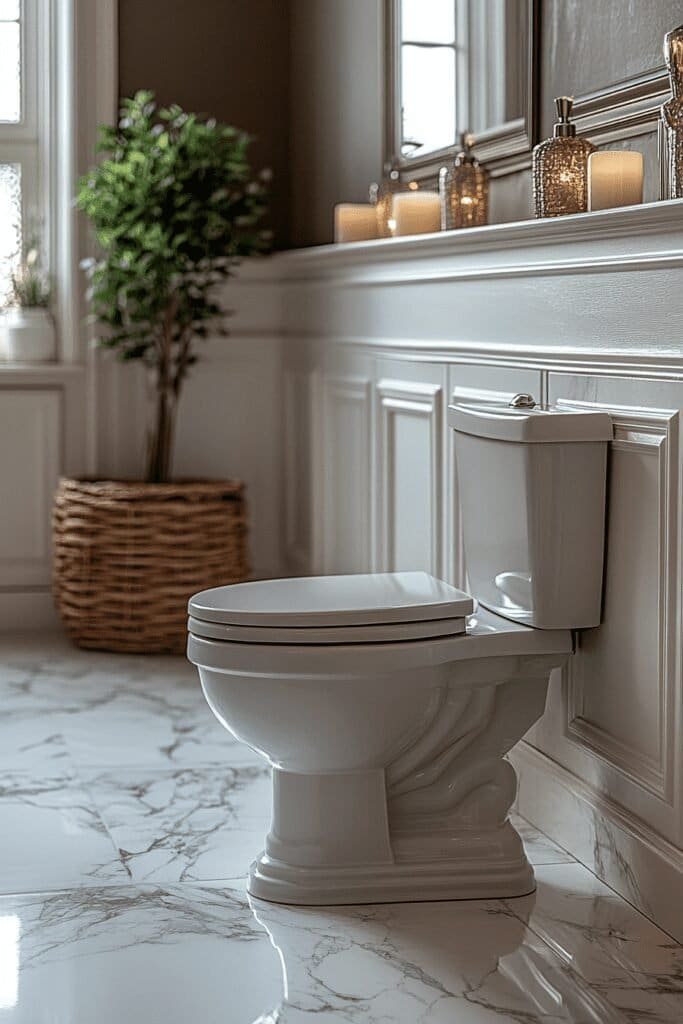

The 19th Century: The Rise of the Modern Bathroom
The Industrial Revolution ushered in an era of tremendous progress for bathroom technology. Indoor plumbing, gas water heaters, and the mass production of materials like copper and porcelain revolutionized the bathroom.
Hygiene and Germ Theory
In the late 1800s, the discovery of germs shifted public perception of cleanliness. The bathroom became an essential part of maintaining good health, with bathing and frequent washing becoming a necessity rather than a luxury.
Indoor Plumbing and Hot Water
By the late 19th century, homes were being equipped with indoor plumbing, making it possible to have hot water and a dedicated space for bathing. The electric water heater, invented in 1889, made it easier for middle-class families to enjoy warm baths in the comfort of their homes.
20th Century to Present: The Bathroom Becomes a Sanctuary
In the 20th century, the bathroom became more than just a space for hygiene—it became a place of relaxation and luxury. Technological advances, such as showers, tiled floors, and flush toilets, became standard in most homes.
Mass Housing and Council Houses
In the 1920s, council houses were built with dedicated bathrooms, making them more accessible to the average family. By the 1960s, most homes in the developed world had indoor bathrooms, though it remained a luxury in some rural areas.
Mid-Century Modern Bathroom Design
The mid-20th century saw a focus on bathroom design, with tiles, colors, and innovative materials shaping the look of bathrooms. Designers focused on making the bathroom a stylish yet functional space, which led to the modern trend of bathrooms being part of home decor.
The Evolution of Bathroom Design in the 21st Century
Today, the bathroom is a reflection of both design and technology. Smart features like digital showers, underfloor heating, and steam-free mirrors make the bathroom an innovative space, while eco-friendly options such as water-saving toilets and sustainable materials cater to the environmentally conscious.
Modern bathroom design blends luxury with functionality. Homeowners are increasingly choosing sleek, minimalist designs with natural materials like wood and stone, as well as technological enhancements like rain showers and smart lighting.
As part of a bathroom remodel, there’s also a growing trend toward wellness-oriented bathrooms, with features like spa tubs, aromatherapy showers, and saunas becoming more popular.
Conclusion: A Journey Through Bathroom History
The journey of the bathroom from ancient civilizations to modern times is one of innovation, cultural change, and technological progress. What started as communal baths for spiritual cleansing has evolved into a private space for relaxation, hygiene, and design expression. Today’s bathrooms are a blend of convenience, luxury, and style—far removed from the utilitarian origins of the past.
As we look ahead, bathroom design continues to evolve, incorporating smart technology and sustainable solutions, ensuring that this essential room remains at the forefront of home innovation and comfort.
Disclaimer: As an Amazon Associate, I earn from qualifying purchases. This means that if you click on certain links on this site and make a purchase, I may receive a small commission at no additional cost to you.
